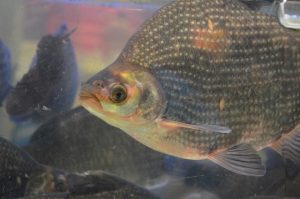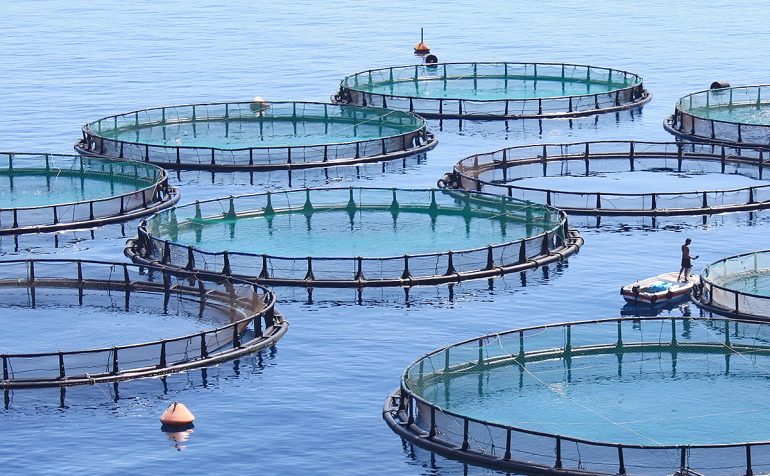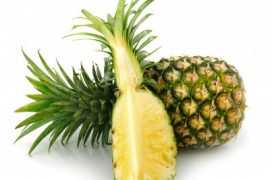Tilapia is an inexpensive fish that offers a good source of protein. Its mild flavor also makes it easily adaptable to numerous recipes. According to seafoodsource.com, it is also the fourth most consumed seafood in the U.S. after shrimp, tuna and salmon. (1) Tilapia has been increasing in popularity since 2002. While many people appreciate its cost effective pricing and mild flavor, few know the darker side of this farmed fish.
What is Tilapia? 
The term tilapia is actually a catch-all term for several varieties of fish from the cichlid family. The most notable being the Tilapia mossambica, which is cultivated around the world. (2)
Tilapia originated in Africa and the Middle East, they are now farmed all over the world, in 135 countries. China is actually the world’s largest producer of tilapia at over. 1.8 million metric tons in 2018. (3, 4)
Aquaculture farmers have developed numerous hybrids that grow efficiently to market size and have desirable appearance and flavor characteristics.
Benefits of Tilapia
The health benefits of eating fish for eye, brain and heart health are well noted. Nutritionally, fish offers B vitamins, vitamin D, iron, omega 3 fatty acids, protein and EPA and DHA. Tilapia also has a low to moderate fat content. So on paper, tilapia seems like a wise choice. However, scientific studies have found the tilapia may be of concern, for several reasons.

Reasons to Avoid Tilapia
Tilapia is a farmed fish. Tilapia farms come in all shapes, sizes and quality of water, fish, food and care can vary from farm to farm. Tilapia don’t like colder temperatures, so if grown in the U.S. they need to be indoor farms with temperature controlled environments. The U.S. imports tilapia from countries such as China, Brazil, Ecuador, Colombia, Mexico, Indonesia and additional countries. These countries offer more ideal temperatures at a more affordable price. (5)
- They are fed an unnatural diet. The natural diet of tilapia is phytoplankton, periphyton, aquatic plants, and small invertebrates. Tilapia “feed” can contain soybean meal, wheat, corn, fishmeal etc. Many of these foods can be genetically modified and raised with traditional herbicides and pesticides. In addition wheat, corn and soy are common allergens for many people, making this an unhealthy option. (5)
- Often Fed Animal Feces –This report from the U.S. FDA revealed that it is common for farmed fish in China to be fed animal feces. It is common practice to let livestock and poultry roam freely in fields and to spread livestock and poultry waste on fields or use it as fish feed. (6)
- It’s often polluted with harmful chemicals
The same report mentioned above also cites that over 800 shipments from 2007-2012 from China were refused due to chemical contamination, including unsafe veterinary drug residues in five types of farm-raised fish and unsafe additives. (6)

- Its Omega 3:6 Ratio Can Increase inflammation
Fish like salmon, trout and tuna contain high amounts of omega 3’s. Omega 3’s are healthy fats which help to lower triglyceride levels and inflammation. Unfortunately tilapia contains higher amounts of omega 6 than omega 3.
Most Western diets are deficient in omega-3 fatty acids, and have excessive amounts of omega-6 fatty acids promote the pathogenesis of many diseases, including cardiovascular disease, cancer, and inflammatory and autoimmune diseases. (7)
The health care community frequently cautions against the consumption of tilapia, as it is generally considered to be inflammatory . (8)
Conclusion
Tilapia is an inexpensive, easily found fish.
While tilapia offers a mild flavor and therefore versatility in recipes, there are other wild or fresh caught options that offer a healthier option.
Avoid tilapia raised in China.
Opt for fresh caught fish, not farm raised.
Choose fish with a healthier balance of Omega 3 and Omega 6 such as salmon, trout or tuna.
Choose wild varieties like salmon, cod, mackerel or herring.
If you eat tilapia, check out seafood watch for their recommendations.
References:
- Americans eating a lot more seafood, according to NFI’s new Top 10 list. (2018, December 13). Retrieved March 1, 2019, from https://www.seafoodsource.com/news/supply-trade/americans-eating-a-lot-more-seafood-according-to-nfi-s-new-top-10-list
- Britannica, T. E. (2017, September 06). Cichlid. Retrieved March 1, 2019, from https://www.britannica.com/animal/cichlid
- The State of World Fisheries and Aquaculture. (n.d.). Retrieved March 1, 2019, from http://www.fao.org/3/a-i3720e.pdf
- Monterey Bay Aquarium Seafood Watch-Tilapia. (2018, November 14). Retrieved March 1, 2019, from https://www.seafoodwatch.org/-/m/sfw/pdf/reports/t/mba_seafoodwatch_tilapiachinareport.pdf
- Nfi, & NFI Nutrition. (2018, May 08). Tilapia Nutrition: Is Tilapia Healthy For You? Get Tilapia Nutrition Facts. Retrieved March 1, 2019, from https://www.aboutseafood.com/tilapia-nutrition/
- Gale, F., & Buzby, J. C. (2009, July). Imports From China and Food Safety Issues. Retrieved March 1, 2019, from https://www.ers.usda.gov/webdocs/publications/44390/9411_eib52_1_.pdf?v=41055
- Simopoulos, A. P. (2002, October). The importance of the ratio of omega-6/omega-3 essential fatty acids. Retrieved March 1, 2019, from https://www.ncbi.nlm.nih.gov/pubmed/12442909
- Weaver, K. L., Ivester, P., Chilton, J. A., Wilson, M. D., Pandey, P., & Chilton, F. H. (2008, July). The content of favorable and unfavorable polyunsaturated fatty acids found in commonly eaten fish. Retrieved March 1, 2019, from https://www.ncbi.nlm.nih.gov/pubmed/18589026
This article was originally posted at The Hearty Soul.








